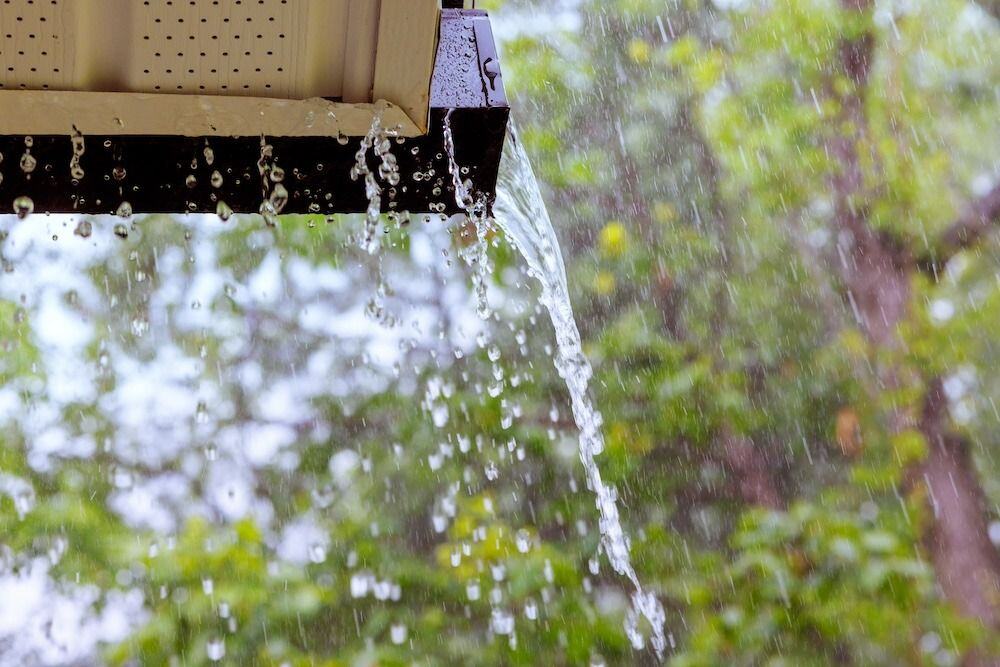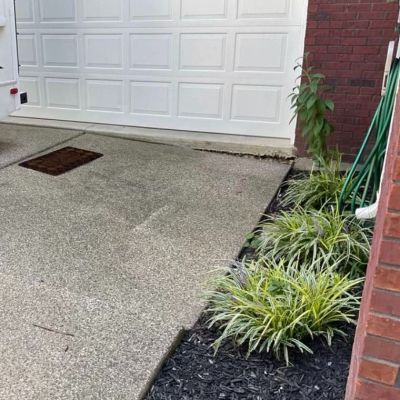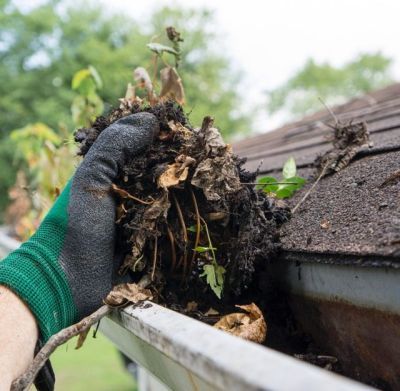How Water Affects Concrete: Downspouts, Gutters & Runoff
October 10th, 2022 | 3 min. read
By Sarah Etler

Learn about how water causes concrete to settle and what you can do to prevent it from happening.
If your concrete is settled or sinking, you may have a problem with water that needs to be addressed before lifting it back into place.
A-1 Concrete Leveling has been lifting sunken slabs for over 30 years, and we’ve seen how important it is to address water erosion problems so they don’t continue to cause settling and other damage to your property even after a repair.
This article will discuss what causes concrete to settle, the common water sources that cause concrete to settle, and why you should fix them if they happen to you.
What causes concrete to settle?
Your concrete can become unlevel when the material under the concrete slab, like soil and/or gravel, compacts over time. It can also settle when voids open underneath, usually caused by animals or water erosion chipping away at the sub-material under the slab.
When water has constant access to the sub-material that’s holding the concrete up, it has an easy time washing it away it erodes or washes it away over time, causing voids or uneven concrete.
Common Sources of Concrete Water Problems
Here are some of the ways that water may be causing your concrete to sink:
1. Downspouts
If you have a downspout near your driveway, porch, or walkway, it may be breaking down the material under your concrete every time it rains. We often see downspouts pointed directly at the sides of concrete slabs, giving them easy access to all the important soil and sub-material holding them up.

A good way to help avoid settling concrete is to reroute downspouts away from concrete slabs with a downspout extension or corrugated pipe. It’s especially important to ensure you follow the grade downwards and that the flow of water isn’t pointing directly at the slab or house.
2. Gutters
If your gutters aren’t regularly maintained, they could be getting clogged, leading to water overflowing and washing out what’s underneath your concrete. Leaking gutters are also a source of erosion, as a constant flow of water can hit one specific spot on your concrete every time it rains, causing targeted damage.

Getting your gutters cleaned, repaired, or patched, and in extreme cases, replaced, will help ensure that overflowing and leaking won’t cause excess water erosion to impact your concrete.
3. Runoff
If your concrete is in a place that’s naturally prone to excess water runoff, erosion is bound to happen. Water constantly flowing over or under the surface of the concrete is what causes the sub-material to wash away, leaving you with voids and settling concrete.
The best way to mitigate erosion from runoff is by regularly replacing the washed-out sub-material with topsoil. It’s important to remember that without soil or sub-material under a concrete slab to hold it up, it will settle. If you can see the bottom of your concrete, be sure to top up the soil underneath.
Why should you fix sources of water erosion?
If you find yourself with trip hazards or concrete problems as a result of water erosion, solutions like concrete leveling won’t be effective in the long term if the root cause of the settling isn’t addressed first.
If you do raise your sunken concrete without first fixing your water issues, your concrete will likely become unlevel again. This is why A-1 Concrete Leveling doesn't offer a warranty on leveling work until after the water problem has been resolved.
What comes first, lifting concrete or fixing water issues?
In most cases, a downspout extension that doesn't have to be buried can be used to direct water away from the area.
If a downspout extension has to go underneath the concrete, it’s a good idea to have it buried and installed before concrete leveling. That way when the concrete is lifted, any new voids can be filled to stabilize the area that was dug out underneath the section of concrete to install the downspout extension.
Now what?
Now that you’ve learned all about water erosion’s part in causing concrete to settle, you’re ready to implement a solution to the problem and get your concrete back to a safe and level position that will last.
Want to know more? Check out these articles from our Learning Center:
- When do you need concrete leveling?
- What happens to concrete in winter?
- Reasons Why Concrete Cleaning & Sealing May Be Right For You
If you’re interested in talking with a member of the A-1 team about what concrete leveling or any of our other services can do for you, click the link below to get in touch!
Click Here to Find Your Nearest Location and Receive a FREE Estimate
Sarah Etler joined A-1 Concrete Leveling after receiving her Bachelor of Arts degree in English from Northern Kentucky University. As A-1's Content Marketing Manager, she works closely with industry experts to produce content that will best answer questions related to concrete repair and maintenance practices. Sarah loves living a life full of discovery and is excited every day to see what new things she can learn and share with those around her.
Topics: